Related Research Articles

QWERTY is a keyboard layout for Latin-script alphabets. The name comes from the order of the first six keys on the top left letter row of the keyboard. The QWERTY design is based on a layout created for the Sholes and Glidden typewriter and sold to E. Remington and Sons in 1873. It became popular with the success of the Remington No. 2 of 1878, and remains in ubiquitous use.
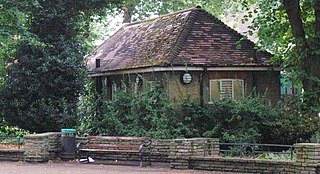
Cottaging is a gay slang term, originating from the United Kingdom, referring to anonymous sex between men in a public lavatory, or cruising for sexual partners with the intention of having sex elsewhere. The term has its roots in self-contained English toilet blocks resembling small cottages in their appearance; in the English cant language of Polari this became a double entendre by gay men referring to sexual encounters. See also gay beat in Australian English.

The QWERTZ or QWERTZU keyboard is a typewriter and keyboard layout widely used in Central Europe. The name comes from the first six letters at the top left of the keyboard:.
Touch typing is a style of typing. Although the phrase refers to typing without using the sense of sight to find the keys—specifically, a touch typist will know their location on the keyboard through muscle memory—the term is often used to refer to a specific form of touch typing that involves placing the eight fingers in a horizontal row along the middle of the keyboard and having them reach for specific other keys. Both two-handed touch typing and one-handed touch typing are possible.

A portable or mobile toilet is any type of toilet that can be moved around, some by one person, some by mechanical equipment such as a truck and crane. Most types do not require any pre-existing services or infrastructure, such as sewerage, but are completely self-contained. The portable toilet is used in a variety of situations, for example in urban slums of developing countries, at festivals, for camping, on boats, on construction sites, and at film locations and large outdoor gatherings where there are no other facilities. Most portable toilets are unisex single units with privacy ensured by a simple lock on the door. Some portable toilets are small molded plastic or fiberglass portable rooms with a lockable door and a receptacle to catch the human excreta in a container.
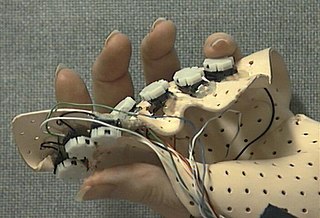
A keyer is a device for signaling by hand, by way of pressing one or more switches. Modern keyers typically have a large number of switches but not as many as a full-size keyboard; typically between four and fifty. A keyer differs from a keyboard in the sense that it lacks a traditional "board"; the keys are arranged in a cluster which is often held in the hand. An example of a very simple keyer is a single telegraph key which used for keying Morse code. In such a use, the term "to key" typically means to turn on and off a carrier wave. For example, it is said that one "keys the transmitter" by interrupting some stage of the amplification of a transmitter with a telegraph key.
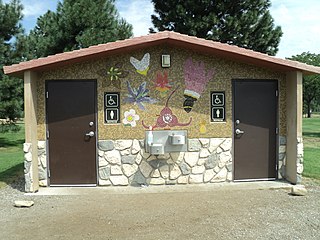
A public toilet, restroom, public bathroom or washroom is a room or small building with toilets and sinks for use by the general public. The facilities are available to customers, travelers, employees of a business, school pupils and prisoners and are commonly separated into male and female toilets, although some are unisex, especially for small or single-occupancy public toilets.
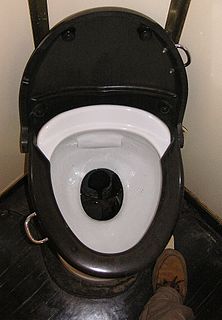
Many passenger trains have toilet facilities, often at the ends of carriages. Toilets suitable for wheelchair users are larger, and hence trains with such facilities may not have toilets in each carriage.
A pay toilet is a public toilet that requires the user to pay. It may be street furniture or be inside a building, e.g. a shopping mall, department store, or railway station. The reason for charging money is usually for the maintenance of the equipment. Paying to use a toilet can be traced back almost 2000 years, to the first century BCE. The charge is often collected by an attendant or by inserting coins into an automatic turnstile; in some freestanding toilets in the street, the fee is inserted into a slot by the door. Mechanical coin operated locks are also used. Some more high tech toilets accept card or contactless payments. Sometimes, a token can be used to enter a pay toilet without paying the charge. Some municipalities offer these tokens to residents with disabilities so these groups aren't discriminated against by the pay toilet. Some establishments such as cafés and restaurants offer tokens to their customers so they can use the toilets for free but other users must pay the relevant charge.

A keypad is a block or pad of buttons set with an arrangement of digits, symbols, or alphabetical letters. Pads mostly containing numbers and used with computers are numeric keypads. Keypads are found on devices which require mainly numeric input such as calculators, television remotes, push-button telephones, vending machines, ATMs, point of sale terminals, combination locks, safes, and digital door locks. Many devices follow the E.161 standard for their arrangement.

An aircraft lavatory or plane toilet is a small room on an aircraft with a toilet and sink. They are commonplace on passenger flights except some short-haul flights. Aircraft toilets were historically chemical toilets, but many now use a vacuum flush system instead.
Contamination control is the generic term for all activities aiming to control the existence, growth and proliferation of contamination in certain areas. Contamination control may refer to the atmosphere as well as to surfaces, to particulate matter as well as to microbes and to contamination prevention as well as to decontamination.

A toilet is a piece of sanitary hardware that collects human urine and feces, and sometimes toilet paper, usually for disposal. Flush toilets use water, while dry or non-flush toilets do not. They can be designed for a sitting position popular in Europe and North America with a toilet seat, with additional considerations for those with disabilities, or for a squatting posture more popular in Asia. In urban areas, flush toilets are usually connected to a sewer system that leads to septic tanks in isolated areas. The waste is known as blackwater and the combined effluent including other sources is sewage. Dry toilets are connected to a pit, removable container, composting chamber, or other storage and treatment device, including urine diversion with a urine-diverting toilet.

Dirt is an unclean matter, especially when in contact with a person's clothes, skin, or possessions. In such cases, they are said to become dirty. Common types of dirt include:

Dvorak is a keyboard layout for English patented in 1936 by August Dvorak and his brother-in-law, William Dealey, as a faster and more ergonomic alternative to the QWERTY layout. Dvorak proponents claim that it requires less finger motion and as a result reduces errors, increases typing speed, reduces repetitive strain injuries, or is simply more comfortable than QWERTY.

A keyboard layout is any specific physical, visual or functional arrangement of the keys, legends, or key-meaning associations (respectively) of a computer keyboard, mobile phone, or other computer-controlled typographic keyboard.
The idea of one-hand typing is to touch type using only one hand, or mainly one hand. Its history and application are closely related to keyboard research on QWERTY and Dvorak keyboard layouts.
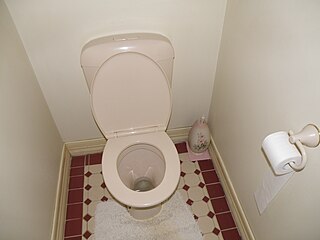
A toilet is a small room used for privately accessing the sanitation fixture (toilet) for urination and defecation. Toilet rooms often include a sink (basin) with soap/handwash for handwashing, as this is important for personal hygiene. These rooms are typically referred to as "half-bathrooms".

The Neo layout is an optimized German keyboard layout developed in 2004 by the Neo Users Group, supporting nearly all Latin-based alphabets, including the International Phonetic Alphabet, the Vietnamese language, and some Cyrillic languages.
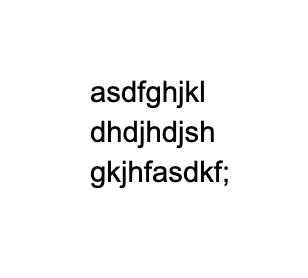
A keysmash is a form of internet slang. Gaining popularity since 2019, it is often used to convey intense and/or indescribable emotions and can also be used as an expression of laughter.
References
- ↑ "Door Handles and Toilet Seats have less bacteria than Keyboards". PRWeb. Retrieved February 19, 2013.
- ↑ "What is a QWERTY Tummy". The Times Of India.
- ↑ "Macmillan Dictionary Buzzword- QWERTY Tummy" . Retrieved February 19, 2013.